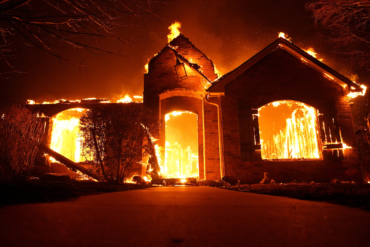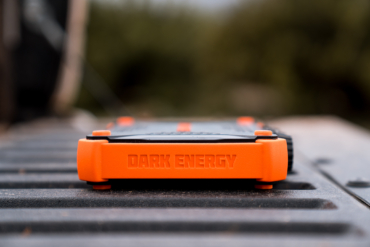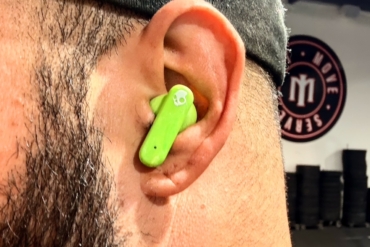Drone maker DJI says its new FPV will reinvent drone flying with an ‘immersive, cinematic flight experience.’
DJI today launched an entirely new type of drone. The DJI FPV combines the first-person view and high-speed performance of racing drones, the cinematic camera sweep of traditional drones, the safety and transmission technology of DJI’s consumer drones, and an optional single-handed motion controller that allows pilots to control the drone with just hand movements.
The brand notes that this product creates a new drone category and opens up possibilities for content creators and drone fans, from beginners to experts.
“It can fly like a racer, hover like a traditional drone, accelerate like a homebuilt project, and stop faster than any of them,” said Ferdinand Wolf, Creative Director for DJI Europe. “DJI FPV lets the world experience the absolute thrill of immersive drone flight without being intimidated by the technology or spending hours building a system from scratch. We can’t wait for the world to try it.” 
We haven’t seen this drone in person yet, but the brand released detailed information about it today and it sounds promising. Read on for a summary of information directly from DJI.
DJI FPV Ecosystem
The DJI FPV ecosystem includes the drone, goggles, a dedicated remote controller, and a new intuitive motion controller option that steers the drone based on the movement of your hand. The drone has high-performance motors for incredible speeds, an intuitive user interface, and the latest safety features for greater control.
The new FPV system lets pilots see from the drone’s perspective in low-latency high definition thanks to O3, the third iteration of DJI’s proprietary OcuSync technology. It helps pilots capture ultrasmooth and stable 4K video at 60 fps with the assistance of RockSteady electronic image stabilization.
Three distinct flight modes allow pilots to become acclimated to the system. DJI FPV’s advanced safety features include a new Emergency Brake and Hover feature to help make flying safer and less intimidating for new users.
Other safety solutions include GPS-based geofencing to advise pilots of airspace restrictions and potential hazards. It also features an ADS-B receiver system to warn pilots when other manned aircraft are nearby.
Multiple Flight Modes
DJI FPV allows pilots to choose from multiple flight modes to match their skill levels.
- Normal (N) Mode: During N mode operation, DJI FPV operates similar to other DJI drones, hovering in place with the use of GPS and/or visual positioning systems (VPS) on the bottom of the drone. The most approachable flight mode, N mode allows obstacle detection sensors on the front to warn pilots when obstacles are near. The drone tasks pilots with maneuvering away from any detected obstacles.
- Manual (M) Mode: Take full control over the drone with M mode, which is designed for more experienced users. M mode disables all sensors and hovering features.
- Sport (S) Mode: A new hybrid blend of M and N mode, S mode offers some of the dynamic movement capabilities that come with M mode along with some of the key safety features of N mode. S mode is the middle step between the three modes. It’s developed to give pilots more room to explore their skills as they get accustomed to FPV flight.
While in the air, pilots can also use a suite of safety features. A dedicated Emergency Brake and Hover feature is available in all flying modes to make the drone stop and hover in place at any time during the flight.
Obstacle detection sensors can be activated while operating in N mode. This alerts pilots of any detected obstacles and automatically slows down the aircraft.
Visual Positioning Sensors (VPS), along with an auxiliary light on the bottom of the aircraft, are also available to assist in smooth takeoffs and landings.
Failsafe Return to Home automatically brings the drone back to its home point with a press of a button. This feature also kicks in if it loses the transmission signal.
The ADS-B receiver system provides audio and visual notifications to the pilot via the FPV Goggles when traditional aircraft such as airplanes or helicopters equipped with ADS-B transmitters are in the vicinity.
Immersive Flight, High Speed
DJI FPV lets you see the world in a new way using the latest in HD transmission technology. Pilots can see a clear, long-range, low-latency feed from the DJI FPV aircraft while wearing the DJI FPV Goggles V2.
And pilots won’t want to blink. Racing motors allow a maximum speed of 140 kph (87 mph) and a max acceleration of 0-100 kph (0-62 mph) in just two seconds.
O3 transmission is the next step in FPV transmission technology. It offers a 10km transmission range, auto-switching dual-frequencies, a high bitrate of 50 megabits per second (Mbps), and anti-interference methods to ensure a reliable feed. Announced in 2019, the DJI HD transmission system brought the world’s first low-latency, HD digital feed to the market.
The new DJI FPV system uses that same technology to bring a crystal-clear image to the goggles with ultralow latency. Pilots can choose from several different viewing options, including:
- Standard low-latency HD mode: See the world in 1440x810p, in either 60 fps with a wider 142-degree Field of View (FOV) or 50 fps with 150-degree FOV.
- Smooth mode: In this mode, pilots activate high frame rates for a more cinematic look. Resolution is 1440×810p 120 fps with a 142-degree FOV or 100 fps at a 150-degree FOV.
- Audience mode: Share the pilot’s perspective in audience mode, which connects up to eight additional goggle sets to the pilot’s view, so even onlookers can experience the flight.
Incredible Flight Performance, Breathtaking Footage
Not only does DJI FPV offer incredible flight performance, but it can also capture dynamic cinematic footage. The integrated 4K/60fps 120 Mbps camera is on a single-axis gimbal. This provides stability during intricate maneuvers while rotating vertically for unique angles.
Additionally, its RockSteady stabilization technology smooths shaky footage and eliminates the rolling shutter effect when capturing fast-moving scenes. Advanced distortion correction software can remove the warped and unappealing fish-eye look common in FPV footage.
Pilots can record footage in 4x Slow Motion in 1080p and 120 fps to relive epic moments in every detail. Store footage in H.265 or H.264, which uses less space on the memory card but preserves fine details during compression.
Educational Tools: Learning to Fly the DJI FPV Drone
Supported by a wealth of interactive and realistic tools, pilots will be up in the air quickly and with confidence. DJI FPV uses the latest version of the DJI Fly app, which includes new detailed “how to fly” tutorials.
The FPV drone also works with the DJI Virtual Flight App, a free simulator app that familiarizes new pilots with drone flying movements in an easy, fun, and risk-free environment. The simulator allows pilots to fly the DJI FPV drone in various settings using the dedicated controller.
DJI FPV Drone: Pricing Details
DJI FPV is available for purchase today from its online store and from authorized retail partners. Several kits are available. The standard DJI FPV Combo includes the FPV drone, remote controller, FPV goggles, all required cables, and a battery. It retails for $1,299.
The DJI FPV Fly More Kit is also available. This kit includes two additional Intelligent Flight Batteries and the dedicated charging hub, priced at $299. The optional single-hand-compatible Motion Controller is sold separately for $199. Find additional info at DJI store.










